PERFLUOROOCTANOIC ACID AMMONIUM SALT
Synonym(s):Ammonium pentadecafluorooctanoate;Perfluorocaprylic acid ammonium salt;Perfluorooctanoic acid ammonium salt
- CAS NO.:3825-26-1
- Empirical Formula: C8H4F15NO2
- Molecular Weight: 431.1
- MDL number: MFCD00042599
- EINECS: 223-320-4
- SAFETY DATA SHEET (SDS)
- Update Date: 2024-12-18 14:08:57
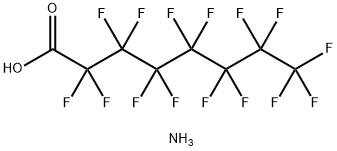
What is PERFLUOROOCTANOIC ACID AMMONIUM SALT?
Chemical properties
White solid powder
The Uses of PERFLUOROOCTANOIC ACID AMMONIUM SALT
For polymerization of fluorinated monomers.
The Uses of PERFLUOROOCTANOIC ACID AMMONIUM SALT
Polymerization of fluorinated monomers; surfactant
What are the applications of Application
Pentadecafluorooctanoic acid ammonium salt is a very active fluorosurfactant with high stability
Hazard
Toxic by inhalation and skin contact. Liver damage. Possible carcinogen.
Health Hazard
Ammonium perfluorooctanoate is an hepatotoxin in rats; there are no reports of adverse effects in humans.
Safety Profile
Confirmed carcinogen. Poison by inhalation. Moderately toxic by ingestion. An eye and skin irritant. Experimental reproductive effects. When heated to decomposition it emits toxic fumes of Fand NH3.
Properties of PERFLUOROOCTANOIC ACID AMMONIUM SALT
| Melting point: | 163-165(dec.) |
| Density | 1,163 g/cm3 |
| solubility | H2O: 0.1 g/mL, clear, colorless |
| form | Solid |
| BRN | 4286466 |
| CAS DataBase Reference | 3825-26-1(CAS DataBase Reference) |
| EPA Substance Registry System | Ammonium perfluorooctanoate (3825-26-1) |
Safety information for PERFLUOROOCTANOIC ACID AMMONIUM SALT
| Signal word | Danger |
| Pictogram(s) |
 Corrosion Corrosives GHS05  Skull and Crossbones Acute Toxicity GHS06  Health Hazard GHS08 |
| GHS Hazard Statements |
H302:Acute toxicity,oral H318:Serious eye damage/eye irritation H331:Acute toxicity,inhalation H351:Carcinogenicity H360:Reproductive toxicity H362:Reproductive toxicity, effects on or via lactation H372:Specific target organ toxicity, repeated exposure |
| Precautionary Statement Codes |
P260:Do not breathe dust/fume/gas/mist/vapours/spray. P263:Avoid contact during pregnancy/while nursing. P280:Wear protective gloves/protective clothing/eye protection/face protection. P305+P351+P338:IF IN EYES: Rinse cautiously with water for several minutes. Remove contact lenses, if present and easy to do. Continuerinsing. P308+P313:IF exposed or concerned: Get medical advice/attention. |
Computed Descriptors for PERFLUOROOCTANOIC ACID AMMONIUM SALT
New Products
Tert-butyl bis(2-chloroethyl)carbamate 4-Methylphenylacetic acid N-Boc-D-alaninol N-BOC-D/L-ALANINOL N-octanoyl benzotriazole 3-Morpholino-1-(4-nitrophenyl)-5,6-dihydropyridin- 2(1H)-one Furan-2,5-Dicarboxylic Acid DIETHYL AMINOMALONATE HYDROCHLORIDE 1,1’-CARBONYLDIIMIDAZOLE R-2-BENZYLOXY PROPIONIC ACID 1,1’-CARBONYLDI (1,2-4 TRIAZOLE) N-METHYL INDAZOLE-3-CARBOXYLIC ACID (2-Hydroxyphenyl)acetonitrile 4-Bromopyrazole 5-BROMO-2CYANO PYRIDINE 5,6-Dimethoxyindanone 5-broMo-2-chloro-N-cyclopentylpyriMidin-4-aMine 2-(Cyanocyclohexyl)acetic acid 4-methoxy-3,5-dinitropyridine 1-(4-(aminomethyl)benzyl)urea hydrochloride 2-aminopropyl benzoate hydrochloride diethyl 2-(2-((tertbutoxycarbonyl)amino) ethyl)malonate tert-butyl 4- (ureidomethyl)benzylcarbamate Ethyl-2-chloro((4-methoxyphenyl)hydrazono)acetateRelated products of tetrahydrofuran


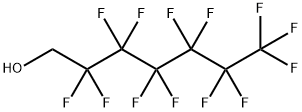
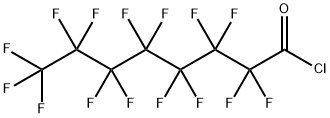


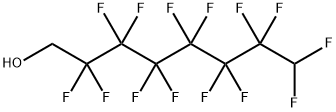
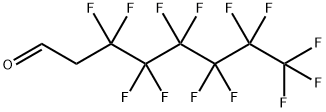
You may like
-
 Pentadecafluorooctanoic acid ammonium salt CAS 3825-26-1View Details
Pentadecafluorooctanoic acid ammonium salt CAS 3825-26-1View Details
3825-26-1 -
 1975-50-4 98%View Details
1975-50-4 98%View Details
1975-50-4 -
 2-HYDROXY BENZYL ALCOHOL 98%View Details
2-HYDROXY BENZYL ALCOHOL 98%View Details
90-01-7 -
 2-Chloro-1,3-Bis(Dimethylamino)Trimethinium Hexafluorophosphate 221615-75-4 98%View Details
2-Chloro-1,3-Bis(Dimethylamino)Trimethinium Hexafluorophosphate 221615-75-4 98%View Details
221615-75-4 -
 61397-56-6 CIS BROMO BENZOATE 98%View Details
61397-56-6 CIS BROMO BENZOATE 98%View Details
61397-56-6 -
 14714-50-2 (2-Hydroxyphenyl)acetonitrile 98+View Details
14714-50-2 (2-Hydroxyphenyl)acetonitrile 98+View Details
14714-50-2 -
 118753-70-1 98+View Details
118753-70-1 98+View Details
118753-70-1 -
 733039-20-8 5-broMo-2-chloro-N-cyclopentylpyriMidin-4-aMine 98+View Details
733039-20-8 5-broMo-2-chloro-N-cyclopentylpyriMidin-4-aMine 98+View Details
733039-20-8
Statement: All products displayed on this website are only used for non medical purposes such as industrial applications or scientific research, and cannot be used for clinical diagnosis or treatment of humans or animals. They are not medicinal or edible.